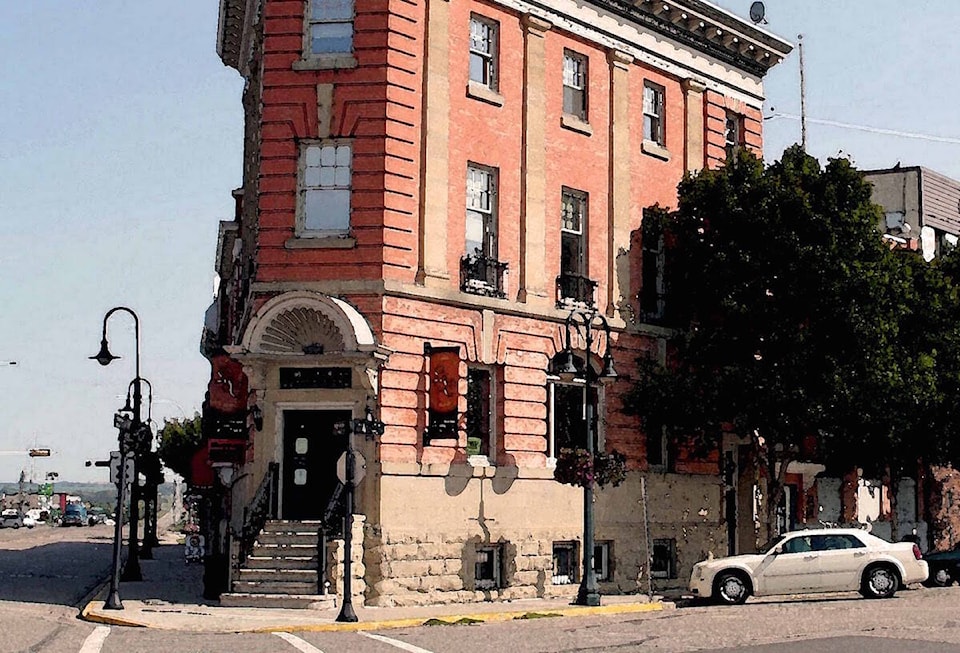Lacombe Museum features ‘Love Letters From the Past’ exhibit
11 January 2024

Quoted from an article in the Lacombe Express from January 11, 2024.
A new exhibit at the Lacombe Museum’s Flatiron Building explores the art of letter writing that spanned and connected Canada and Ukraine in the early 20th century.
Developed by the Kule Folklore Centre at the University of Alberta, Love Letters From the Past: Courtship, Companionship, and Family in the Ukrainian Canadian Community is an exhibit showcasing the lives of early 20th-century Ukrainian Canadians through love letters and love stories.
“It focuses on how relationships were built through the written word, and how important they were for everyone from that time,” explained Melissa Blunden, the museum’s executive director.
“We’ve also been able to supplement it with some stories that are more local to Lacombe from our collection here,” she said.
With the increased settlement of folks from Ukraine in recent months, it was also felt that this exhibit would be a strong way to share this historical chapter, she added.
The letters in the exhibit run the gamut from families and friends to young couples who were just getting acquainted and growing their romances through communication, too.
Locally, there are some fascinating stories to showcase as well.
“We have a war bride story that we are sharing, too. It’s a really interesting story because the family had originally emigrated to Canada. The woman was born in Canada, and then they moved back to England shortly after.
“And then after the war, she met a Canadian soldier — they married, and then they came back to Lacombe,” said Blunden, adding that including these kinds of local stories adds to the engaging experience of the overall exhibit.
“We try to look at other ways that people communicated, through letters, and postcards, for example. And it wasn’t always through the written word. Sometimes it was through lockets, pieces of hair, or flowers. There was a whole different way of communicating from what we often think of.”
These days, of course, communication is typically instantaneous, so to showcase the means of communication from 100 years ago to what is commonplace today also proves to be an interesting comparison.
She noted that the exhibit is featured in English, French, and Ukrainian as well.
“So it is very accessible to our newcomers, and we are excited for that,” she said.
For Blunden, the exploration of history — both local and from points abroad — offers a constant sense of fulfillment.
“I have a personal passion for history and our shared heritage. I also think there with this exhibit, there is something very special about seeing these handwritten letters. It’s not something that happens much anymore,” she said. “You get to look at the wording, too.”
She pointed to one card that was meant for a group of people to read, as postage was quite expensive for the sender. To that end, letters like these would have been carefully crafted as well.
“It puts into focus maybe what matters in our current lives. We can get bogged down and stressed by things that are going on in life, but when you walk into this exhibit, it’s just full of hope and love,” she said.
“And as the title says — that is also that sense of companionship. It’s not just couples, but families, too. So I think that it’s a very uplifting exhibit.”
“Something that I am also passionate about is community engagement. And so we are figuring out ways to do some programming with this exhibit, too.”
One way they will be doing this is by having local folks write letters for others in the community.
“We have one of our post office boxes from our collection which is a beautiful antique piece. People will be able to put letters in it, and then we are going to hand-deliver them in February to the Royal Oak seniors facility here in town,” she said.
“That is something that we are very excited to do with this particular exhibit.”
The exhibit will be on display through March 2.
Quoted from an article in the Lacombe Express from January 11, 2024. Article by Mark Weber.